How could one office concept, dismissed as a fad a decade ago, redefine global work culture? Coworking spaces have skyrocketed to become indispensable. Believe it or not, they are silently disrupting the corporate arena with transformative impacts.
Amidst the clutter of traditional office setups, the need for flexibility and community has never been more pressing. Remote work has taken the main stage, thrusting coworking environments into the limelight — and their significance is set to amplify further.
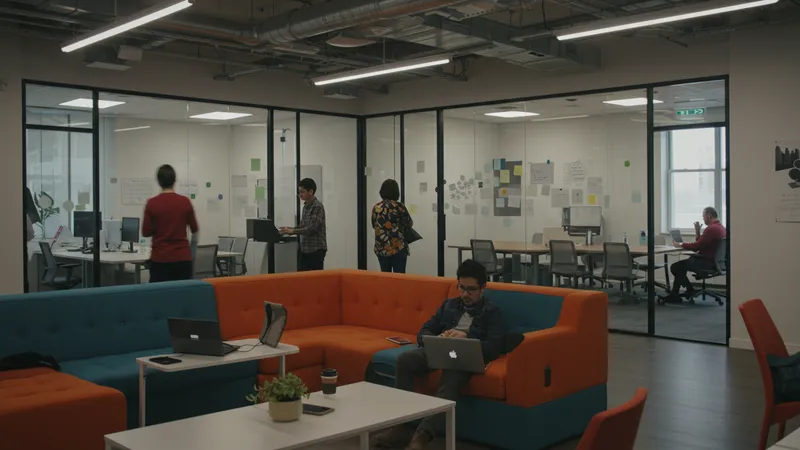
The charm isn’t just in the chic interiors but the undeniable boost in productivity. Studies reveal coworking increases output by at least 15%. Yet, the real kicker? The heightened sense of autonomy. Employees who can choose where they work feel empowered, striking rapidly at traditional corporate norms. But that’s not even the wildest part…
These airy, collaborative spaces foster innovation. Picture countless creative professionals, elbow to elbow, spawning ideas that might never hatch in your typical 9-to-5 cubicles. Ideas born from synergy that propels several startups to stardom. Coworking is turning into an incubation hub that not even Silicon Valley foresaw. Yet, hold your gasp, for what unfolds next might astonish the most seasoned entrepreneur…
What happens next shocked even the experts, challenging preconceived notions and offering a glimpse into a fascinating shift that goes beyond mere logistics. Stay with us as the layers of this story unfold to reveal the untold secrets fueling this phenomenon.
Coworking spaces are more than just colorful, open-concept offices; they are catalyst-rich environments that spark creativity and collaboration. Behind every open desk is a wealth of untapped potential. Recent studies suggest that 70% of coworking members feel healthier and more productive. Such statistics suggest these spaces are not just serving freelancers but revolutionizing corporate productivity as well. But there’s one more twist…
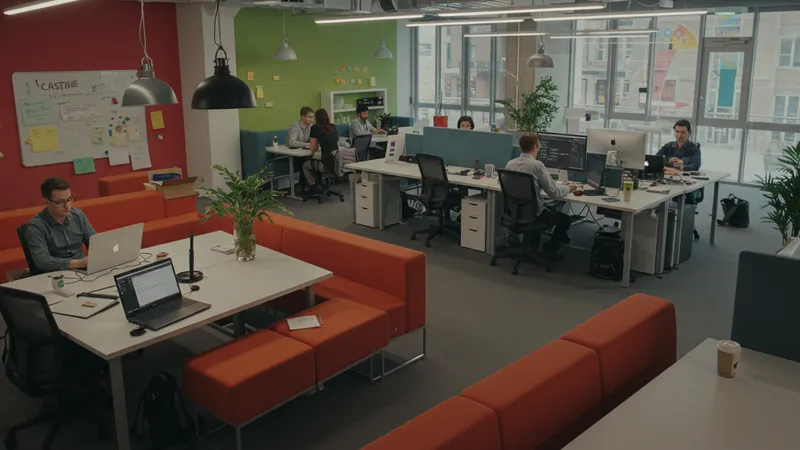
Far from being a temporary solution, coworking has become an enduring trend, bridging the gap between home and office. Much like the transition from public payphones to smartphones improved how we communicate, coworking enhances how we collaborate. Interestingly, the layout flexibility in these spaces caters to an individual's every professional whim, from solitary tasks to impromptu team meetings.
This flexibility isn't merely physical; it's financial too, with businesses avoiding hefty commercial leases. This model allows both startups and established companies to scale their office space as they grow, with minimal headache. But what you’ll find next might change how you see flexible leasing forever.
Beyond productivity and cost savings, there's a newfound sense of community. Entrepreneurs share resources, ideas, and even clients. In a world where networking is a strong currency, these spaces serve as a hotbed for serendipitous encounters. Prepare for a revelation that will fundamentally alter how you approach networking opportunities.
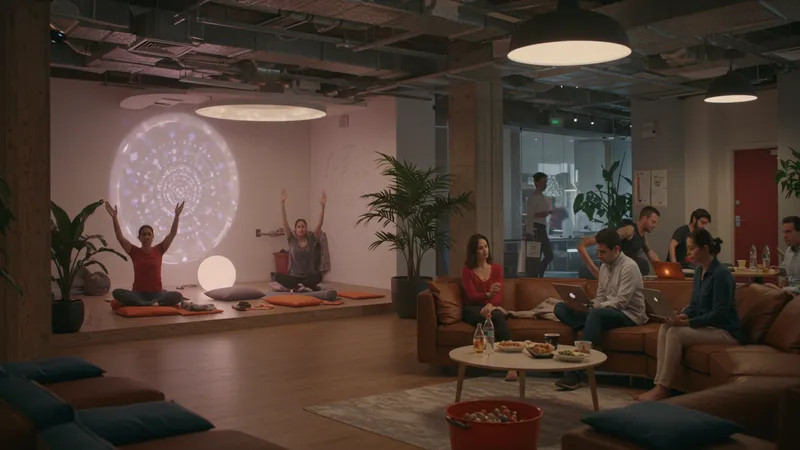
The focus on wellness at coworking spaces isn't just a marketing tactic—it’s a competitive edge. From meditation rooms to yoga classes, these environments ensure that the needs of the whole person are met. Coworkers report a 60% increase in their work-life satisfaction compared to traditional office setups. It's evident that taking breaks in a lounge or enjoying communal meals enhances both physical and mental health, but there's a surprise in how these spaces redefine wellbeing at work.
It’s not just physical wellness either. The impact these spaces have on mental health is huge, with stress reduction programs becoming a staple offering. The rise of flexible hours and spaces has significantly decreased burnout rates, offering a reprieve previously unattainable in rigid employment scenarios. But are employees really benefiting to the fullest extent? The answer might surprise you.
While companies pocket the increased productivity, employees relish in newfound job satisfaction. This balance creates an environment where people want to work, thus reducing turnover rates—a chronic issue in many industries. But perhaps even more revolutionary is how coworking empowers employees to curate their workflow, liberating them from traditional constraints.
The allure of improved wellness in such spaces has turned heads in corporate boardrooms. Now, companies are questioning more fundamental questions about what workplaces should offer beyond the basics. Is the reinvention of corporate culture just beginning? What you read next might change how you approach the concept of 'office' itself.
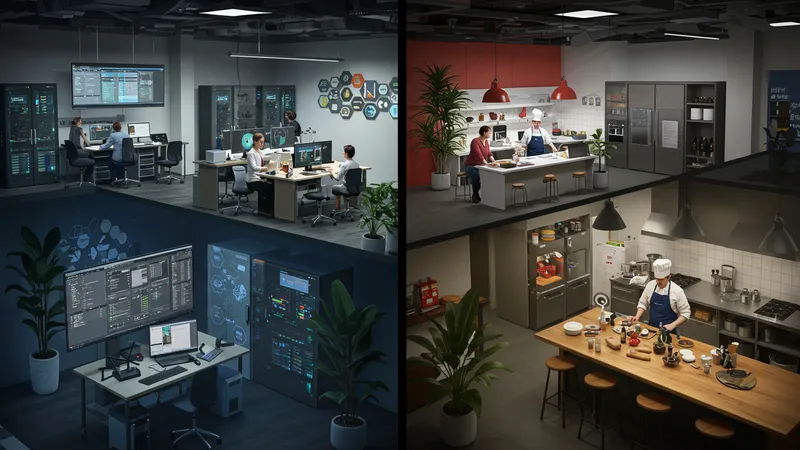
In the booming market of coworking, niche spaces cater to specific industries, pushing innovation further. Whether it’s spaces tailored for designers with 3D printers or those built for tech startups with ultra-high-speed internet and server rooms, niche coworking is slicing through a saturated market. Roughly 35% of global coworking residents now choose to operate out of these customized environments. But how they're reshaping business landscapes is particularly fascinating.
Consider culinary coworking spaces geared for food startups, offering kitchen facilities without massive overhead costs. Entrepreneurs test ideas, host tastings, and refine recipes with real-time feedback from peers. Such spaces do more than reduce expenses; they bolster creativity while developing a strong sense of community within specific sectors.
Naturally, if one sector flourishes, others will follow. By focusing on niche industries, these spaces create an ecosystem that supports the growth of specialized communities. This democratizes access, allowing resource-intensive industries like biotech, fashion, or even film production to engage with coworking in ways previously unimaginable.
So what’s next for coworking spaces? They might just redefine what it means to be in a business community. The unforeseen ripple effects only continue to multiply when this level of specialization addresses the core necessities of diverse professions. But wait, there’s more to how this trend impacts broader business ecosystems…
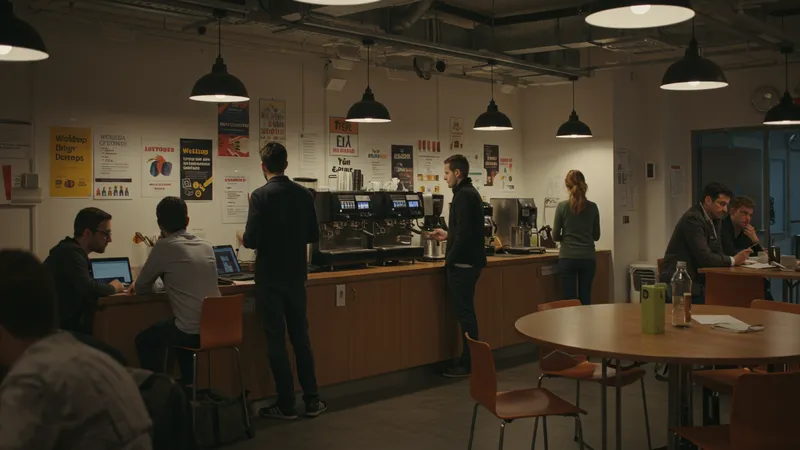
Beyond the mere gathering of professionals, coworking spaces act as melting pots for cross-disciplinary collaboration. Under one roof, potential partners and co-founders casually meet by the coffee machine. This natural mingling has given birth to numerous successful partnerships, driving innovation at unprecedented rates.
The atmosphere is ripe for collaboration, with events and workshops often hosted on-site to stimulate engagement and skills development. Regular programs are another perk, from tech meetups to design brainstorms, presenting vast opportunities to learn and grow outside traditional continuing education channels.
As companies realize the creative advantage, they are increasingly opting to base themselves in these dynamic environments. The risk of professional siloing diminishes, fostering a culture of openness that pushes boundaries. Are traditional office hierarchies losing relevance in such settings?
It's in these unpredictable interactions that coworking spaces demonstrate their greatest strength: celebrating diversity in thought and talent. For every freelancer or startup seeking to amplify ideas, these environments could very well be the secret ingredient to their success. And with their continued evolution, surprises in coworking trends see no end. What’s coming next could redefine yet another aspect of work life.
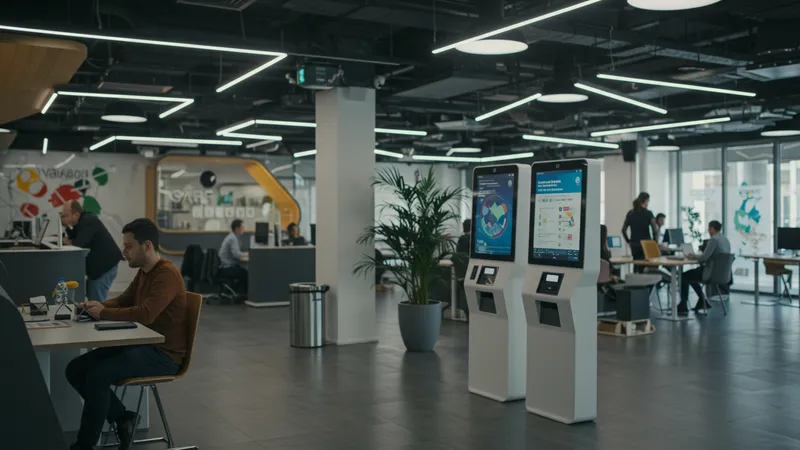
The intersection of technology and coworking spaces is a spectacle to behold. Automation and smart tech integration streamline office operations, allowing businesses to operate with increased efficiency. From AI-driven receptionist services to cutting-edge booking systems, coworking spaces are embracing technology like never before.
Not only does this allure tech-savvy professionals, but it also provides a seamless experience for all users. These digital advancements are in line with the needs of modern employees who prioritize flexibility and efficiency over tradition. How else is tech reshaping our shared work landscapes?
Spaces are becoming veritable hubs of innovation, with IoT-driven devices optimizing everything from climate control to conference room availability. This tech integration boosts user satisfaction, combining the best of both technological and human interaction.
Yet, the most compelling aspect remains the ever-evolving technological landscape further refining what's possible in communal environments. Will coworking spaces continue to lead the charge in adopting new tech well into the future? The answer is bound to surprise you as we delve deeper into these technological wonders and their impact on the future of work environments.
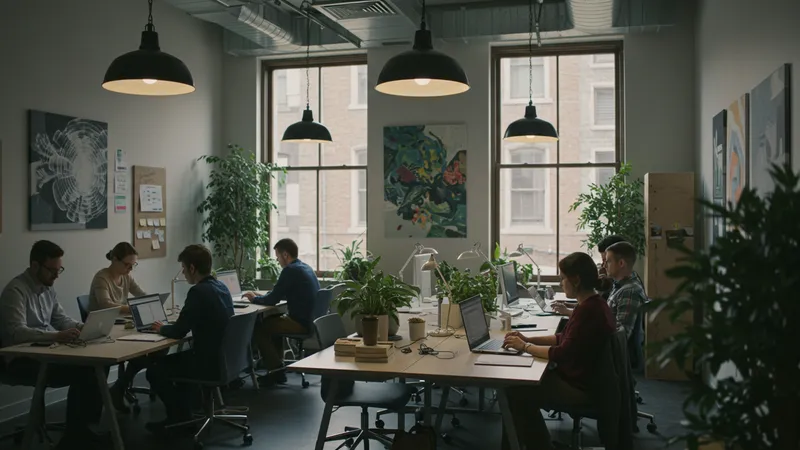
A financial analysis of coworking spaces reveals more than a simple cost-saving narrative. While small businesses use them to avoid the burdensome upfront costs of traditional leases, corporations harness them to outsource workspace flexibility. The economic advantage is clear, but it extends further.
Pertinent statistics indicate that coworking spaces can reduce overhead by 25% while simultaneously providing environments where employee retention rates improve. It's a win-win scenario for both employers and employees. But how deep do the economic benefits really go?
On a broader scale, the rise in these spaces influences local economies positively. Coffee shops, cafes, and other service-based businesses flourish around thriving coworking hubs. It's not just real estate being maximized; communities are, too.
And what about market potential? The sector is expected to expand by nearly 13% over the next five years, offering bountiful opportunities for investors and entrepreneurs alike. This growth is transforming cityscapes while influencing economic models. The ensuing changes in real estate dynamics substantiate how coworking spaces are reimagining the economic landscape more than anticipated.
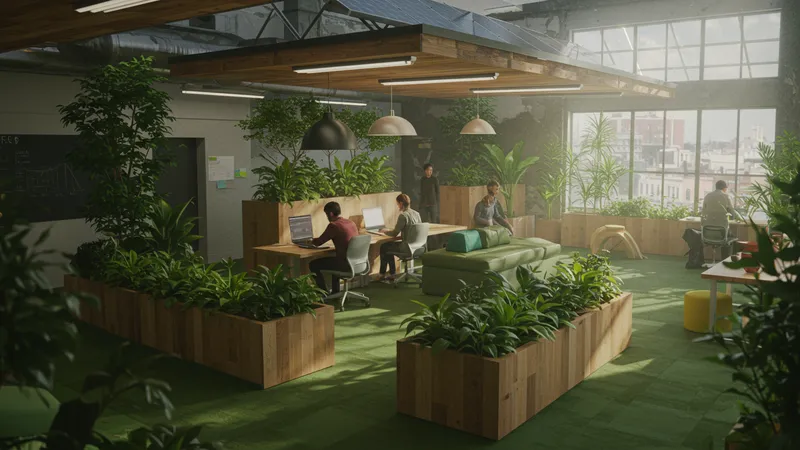
Amid growing environmental consciousness, coworking spaces present a sustainable alternative. When multiple companies share a single infrastructure, the environmental footprint diminishes, resulting in decreased resource consumption and waste. But this is just the beginning of the green impact.
Many of these spaces feature eco-friendly designs, emphasizing natural light, green energy sources, and sustainable materials. The reduced energy usage not only slashes operational costs but aids in conserving the planet. Does this trend also reflect on the ethos of businesses in these spaces?
Yes, it often attracts companies committed to sustainability, fostering eco-responsible behaviors collectively. These practices inspire members to transform their own operations, creating a ripple effect that extends globally.
It becomes evident that coworking offers more than economic or logistical advantages; it enables transformations necessary for societal progress. But the larger question remains: are coworking spaces merely complementing sustainable practices, or do they forge a path towards broader environmental changes? The answer tips the balance in favor of the environment in unexpected ways.
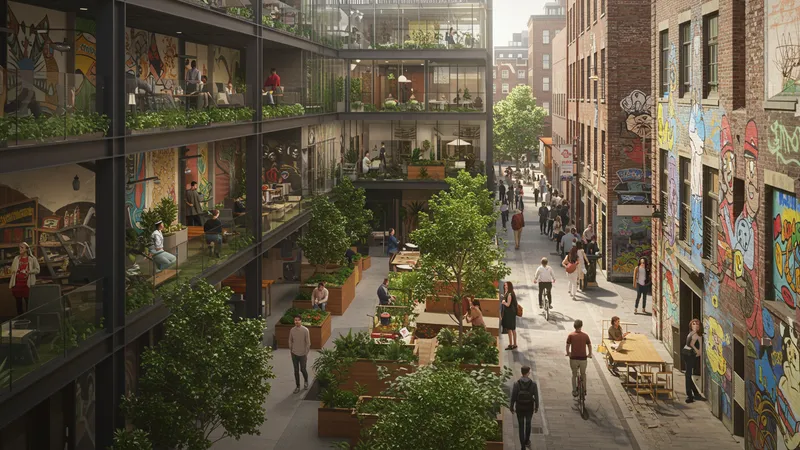
Cities around the world are experiencing a paradigm shift as coworking spaces emerge as urban catalysts. They rejuvenate underserved areas and draw professionals to parts of cities long overlooked. This subtle urban renaissance is remodeling metropolitan landscapes. But that's just surface-level evolution.
Encouraged by the simplicity and elegance of coworking models, urban developers now integrate these spaces into existing city frameworks. The side effect? Thriving local economies that didn't seem plausible before such spaces became fashionable. But this isn't the extent of their impact.
Urban cohesion increases as professionals frequent communal work environments, fostering cultural exchanges melanged with innovative thinking. Coworking makes our cities not only places for commerce but vibrant communities where commerce and community thrive side by side.
The move from centralized office hubs to distributed coworking networks redefines urban planning frameworks, making inclusivity and accessibility priorities in growing metropolises. As spaces continue to burgeon, we’ll have to consider how this will continue to reshape the cities we will inhabit. What may begin as localized innovation could well become a key component in global urban strategies.

The model is not without hurdles; challenges such as privacy concerns and competition for space persist. For instance, open layouts can compromise confidentiality. Yet, coworking spaces work tirelessly to mitigate such issues through soundproof booths and private meeting areas. Is there more than meets the eye?
The accessibility of these spaces isn’t universal; in many cities, coworking remains a privilege. Attempts to democratize access are evident, with initiatives aimed squarely at encouraging broader participation. This is a crucial step towards leveling the playing field.
However, maintaining vibrant communities within spaces requires constant evolution. From integrating advanced tech resources to bolstering networking opportunities, efforts to improve are continual. As these spaces grow, they'll need to tackle the glaring social disparity that still governs many coworking environments.
A closer examination divulges how coworking spaces adeptly circumnavigate these obstacles, often turning challenges into opportunities. The persistent drive to both improve and innovate means these spaces are far from reaching their final form. What's known today might just be a fraction of what's possible tomorrow.
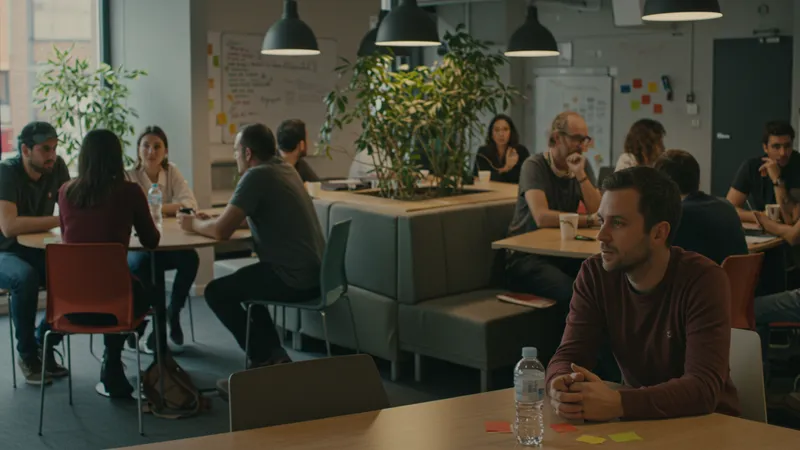
Working in a coworking space affects more than mere productivity; it alters the psychological landscape. Employees feel a vital sense of belonging, mitigating loneliness that's rampant in traditional setups. They rank 6 on loneliness scales versus 8 in isolated work scenarios, a notable difference that impacts morale and engagement.
This arrangement also supports emotional intelligence enrichment. Constant interaction with a wide range of professionals teaches vital skills, enhancing emotional resilience and empathy—qualities essential in today's dynamic work environments. But that's not the whole psychological picture.
Increased control over work schedules correlates with heightened job satisfaction and reduced stress levels. The flexibility to carve out one's rhythm and integrate personal commitments leads to holistic lifestyle improvements. Is this truly freedom at work, or a modern guise of the same rigid expectations?
The emotional wellness linked to coworking reveals deep insights into its transformative potential for mental health. Yet, as with any psychological inquiry, nuance abounds, suggesting new angles for approaching the work-life conundrum. There's more to discover on how this revolution in workspace design could redefine job satisfaction.
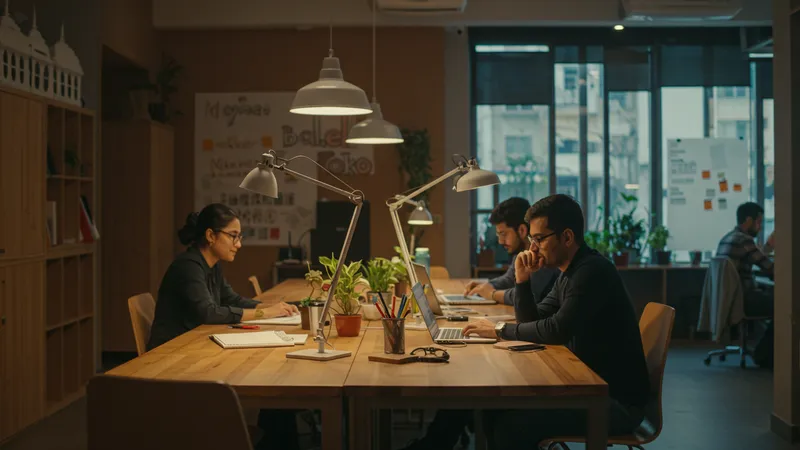
In recent years, coworking has grown far beyond urban centers in the Western world. From bustling hubs in Asia to secluded spots in Africa, coworking is a global trend impacting work norms everywhere. Yet, it's the diversity of its reach that stands most astounding.
Whether it's a tech hub in Bangalore or a social enterprise accelerator in Nairobi, these spaces adapt to local needs while maintaining their core principles of flexibility and community. As coworking becomes a universal phenomenon, cultural nuances infuse fresh vigor into each space—leading to innovative adaptations.
Beyond capacity expansion, these shifts illuminate a landscape where coworking shapes regional economies. In regions where traditional infrastructures struggle, coworking emerges as a beacon of modernity and shared progress. Could these shared environments be leading the charge towards a different future?
The narrative doesn't stop as an urban luxury; it's fast becoming a worldwide norm that fosters connectivity and knowledge exchange regardless of geography. Each instance lends itself to the question: will coworking spaces define the global future of work? The signs point to fascinating possibilities that await discovery.
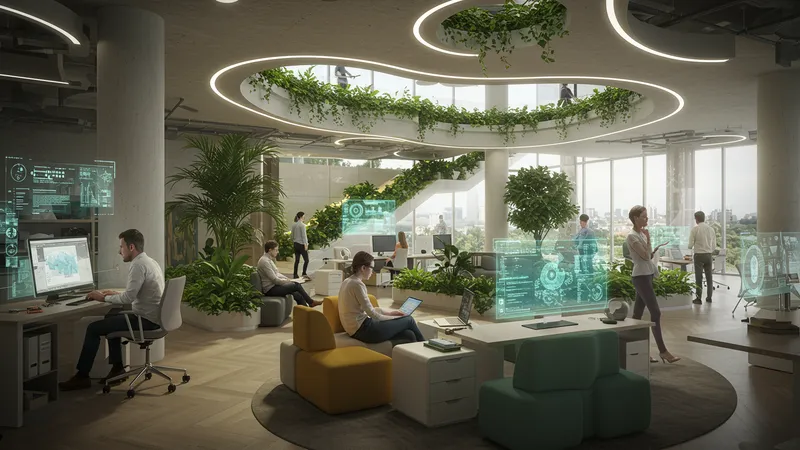
As coworking spaces set a new course for the future of work environments, their trajectory hints at significant shifts on the horizon. The drive towards autonomous work setups tweaked here and improved there ensures coworking remains on the cutting-edge, far beyond a passing trend.
Leading players and small newcomers alike are examining hybrid models that incorporate the best of remote work with community-centric coworking options. The future of such spaces is vibrant, punctuated by bold ventures and uncharted opportunities that challenge traditional work paradigms.
Yet, as inclusivity becomes an overarching goal, collaboration networks might eventually transcend physical coworking to break into the virtual domain. Are coworking spaces merely warm-ups for global virtual workspaces that know no bounds?
As we stand on the brink of redefining work, coworking spaces remain the harbingers of change, promising more than facilitation—a reimagination of productivity, creativity, and community. What's in store might just outstretch the bounds of our current reality, leading us towards unknown yet thrilling destinations. The next iteration of work might already be here, quietly taking form, ready to disrupt as it evolves.
In conclusion, coworking spaces are rewriting the rules of where and how we work. As hubs for innovation and community, they challenge the status quo and inspire new possibilities. Their spread has demonstrated the immense adaptability and potential they possess, reaching into aspects of work and life we've only begun to explore. So, as we look forward to continued evolution in this space, bookmark this story, share it, and remain curious because the revolution of work, it seems, is just getting started.